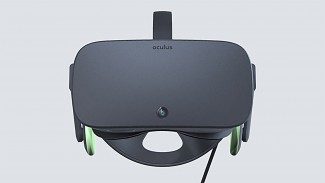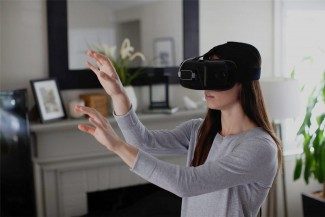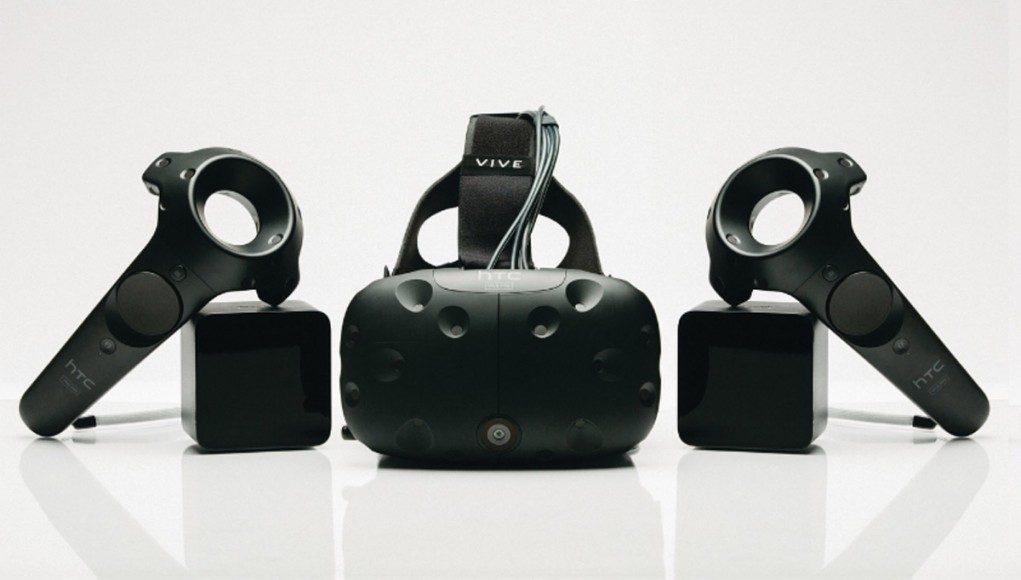HTC has finally taken the wraps off of the second development kit of the Vive VR headset, they’re calling it the ‘Vive Pre’, and the new unit is being shown off here at CES 2016.
The Vive Pre largely seems like a industrial design overhaul compared to the original development kit, with the “breakthrough” the company previously spoke of being a pass-through camera which allows the outside world to be visible when users walk to the edge of the tracked space. While the company says the the Vive Pre includes an “improved visual system with brighter displays and image refinements [which lead] to increased clarity,” the resolution remains the same 2160×1200 so far as we know.
The Vive Pre is notably smaller than the first Vive development kit, which, while impressively functional, lacked in comfort compared to the Oculus Rift and PlayStation VR. The Vive Pre is not only more compact, but it’s also sleeker. Although it retains the pock-marked craters, the photodiodes at the base of each (which detect the tracking system), have been covered over, giving a more polished look.
The controllers have also seen design improvements, moving from the rather large and bulky original Vive controllers to something smaller and sleeker. As with the headset, the Vive Pre controllers have seen their tracking elements smoothed over, now looking less like a proof of concept and more like a finished product. Taking place of the removable batteries, the new controller charges via MicroUSB to an internal battery which HTC says will last for 4 hours.

While the original Vive development kit had placeholder slots for two front-facing cameras, it seems they were never actually functional. The Vive Pre now has one large front-facing lens which allows the user to conveniently ‘see through’ the headset when necessary (perhaps for taking a seat, picking up controllers, etc.). Approaching the edges of the tracked space—which was formerly indicated with a virtual grid appearing in front of you—now actually blends the view from this camera into the virtual space.
According to The Verge, HTC says that this camera can map 3D space around the user, and developers will be able to access this data and use it within their virtual reality experiences. Details are scant on the technical capabilities of the camera, but we expect to learn more here at CES 2016 as we have several opportunities to go hands-on with the unit.

The camera and its pass-through capabilities is the “…very, very big technological breakthrough” which HTC had pointed to as a the cause for a substantial delay of the headset announced in December. But given that the original Vive dev kit already had placeholder cameras on its front—and unless there’s still more to be revealed about the camera’s capabilities—we’re not quite sure which part of the camera or its functionality constitutes a “technological breakthrough,” let alone a “very, very big” one. That’s not to say that it isn’t a welcomed addition to the headset, but we’ve seen similar functionality from the Gear VR’s pass-through camera and integration with the Leap Motion, among other depth-sensing systems.
See Also: Consumer Vive Is “Gonna Look a Lot Different” – Modular Headphones, New Mounting System, and More
While the Vive Pre is an ergonomic improvement, the consumer version set to ship in April 2016 is expected to see even more substantial changes to the design including modular headphones and a ratcheted mounting system for a more comfortable fit.







